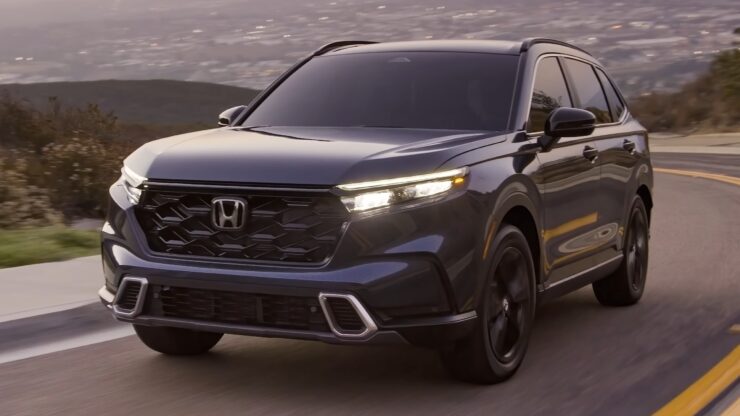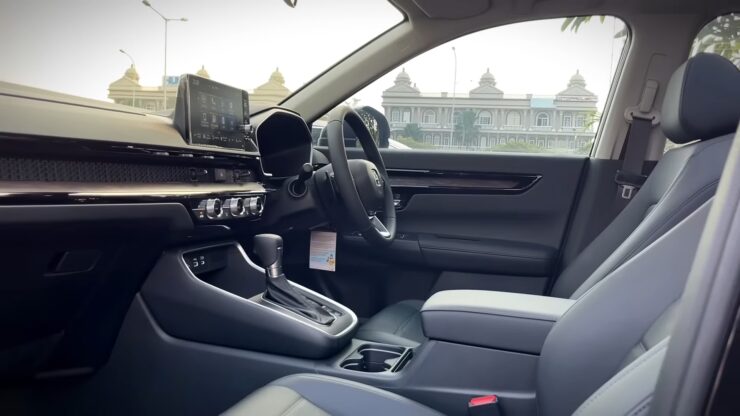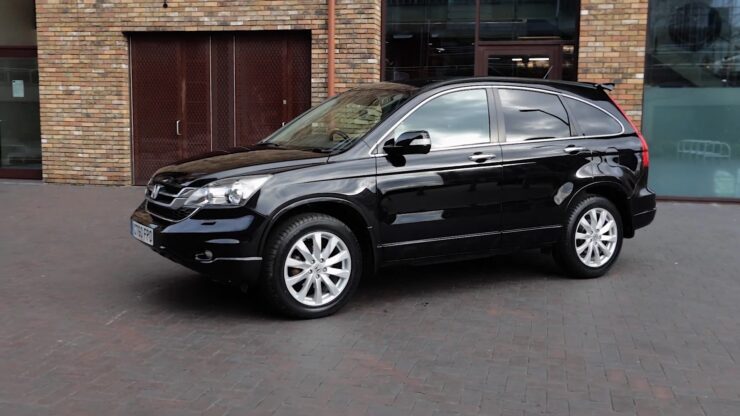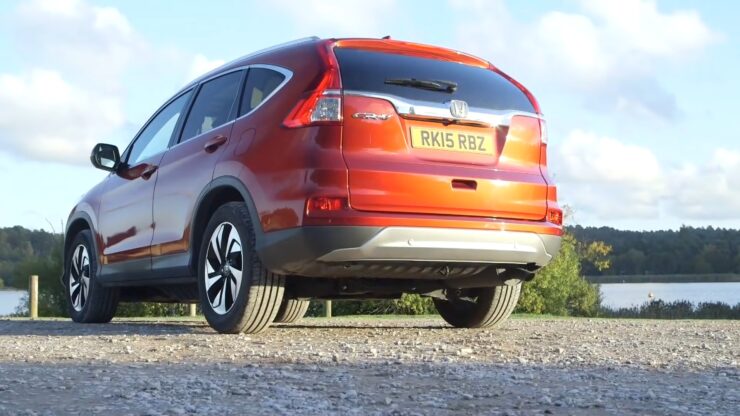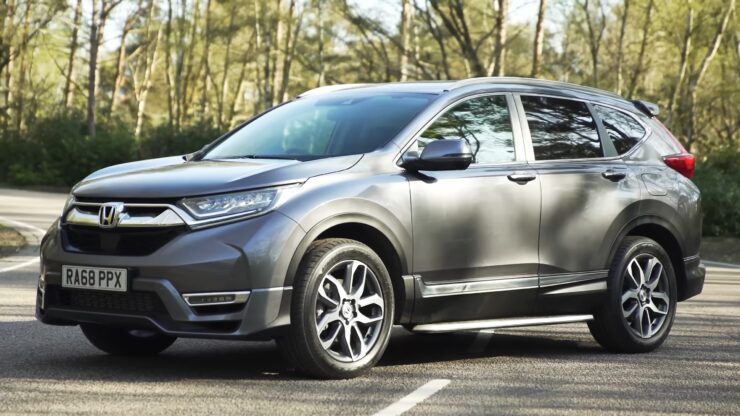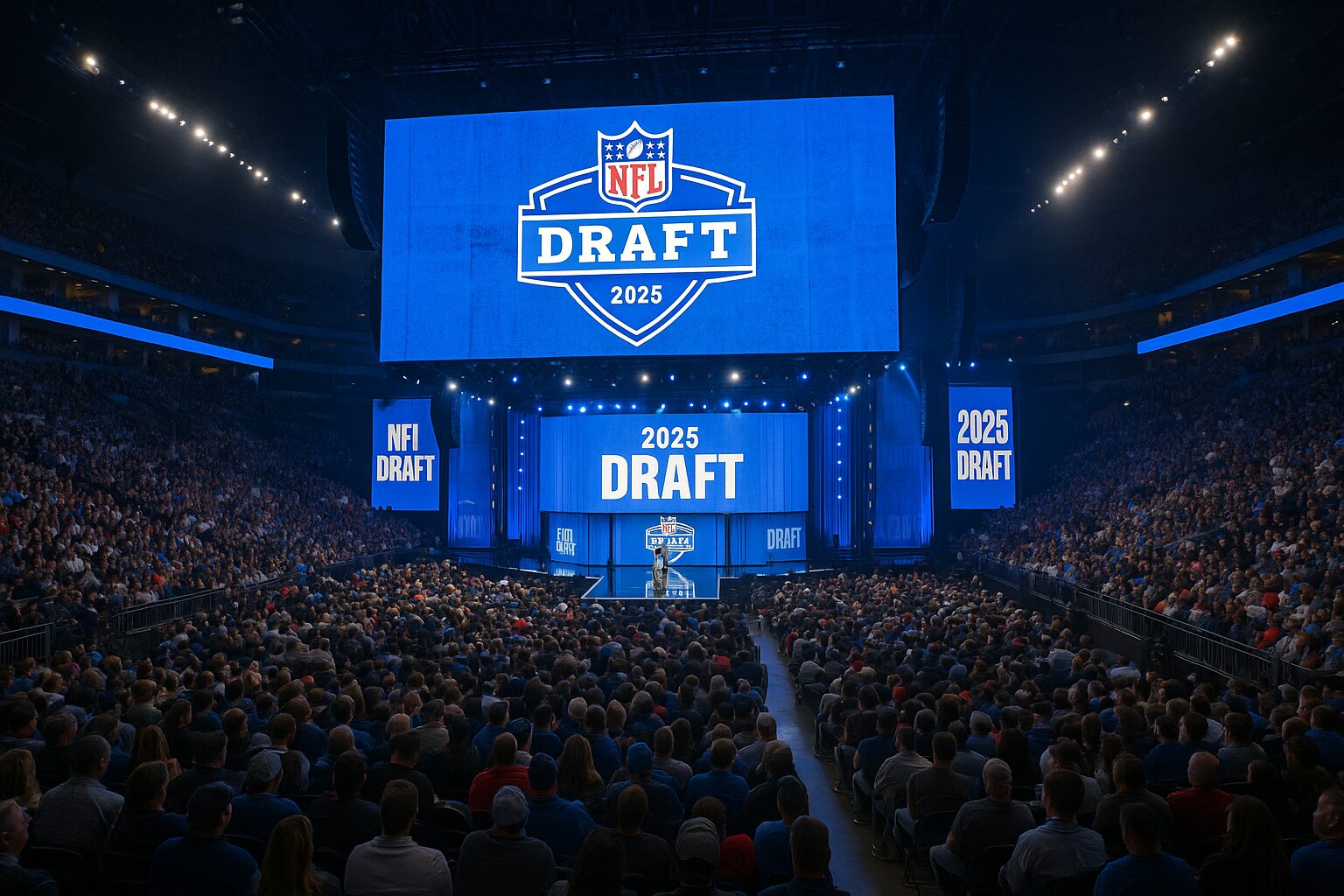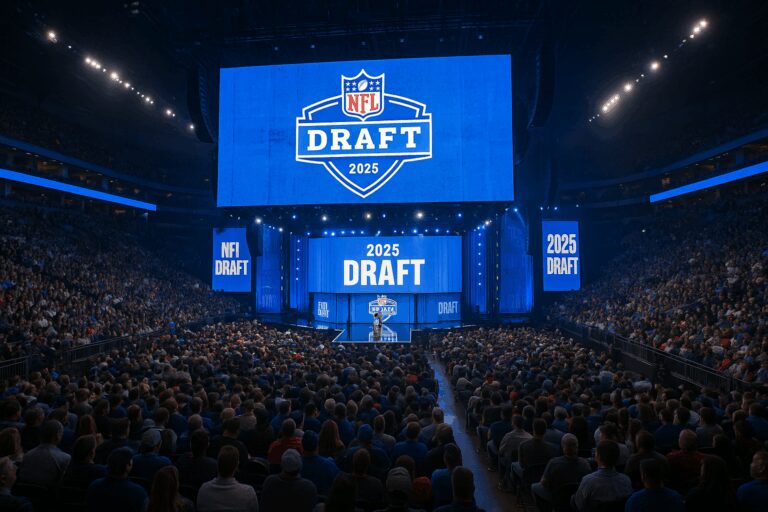The Honda CR-V, a name synonymous with reliability, versatility, and innovation, has been a staple in the compact SUV market since its inception in 1996.
Over the years, it has undergone significant transformations, adapting to the changing needs of consumers and setting benchmarks in its segment. Let’s embark on a journey through time, exploring the evolution of the Honda CR-V from its early days to the present.
The Honda CR-V, also known as the Honda Breeze in China since 2019, is a compact crossover SUV that has been in production since 1995. Initially, the CR-V was built on the same platform as the Honda Civic.
The name “CR-V” is an abbreviation that stands for “Comfortable Runabout Vehicle,” although it has also been associated with the term “Compact Recreational Vehicle.”
My Personal Take
Having been acquainted with the Honda CR-V for years, its evolution has been nothing short of remarkable. From its early days in the late ’90s to the present, the CR-V has consistently demonstrated Honda’s commitment to blending functionality with style.
The CR-V, in its essence, has always been about reliability and versatility, and my experiences with it over the years have only solidified this belief.
The first time I drove a CR-V, it was the second-generation model. Its responsiveness, combined with a spacious interior, made it an instant favorite for city commutes and occasional weekend getaways. Fast forward to the recent models, and the advancements are evident.
The integration of technology, like the touchscreen infotainment system and wireless charging, speaks volumes about Honda’s forward-thinking approach.
But it’s not just about the tech; the driving experience has been refined over the years. The newer models, with their hybrid capabilities, offer a smoother, more fuel-efficient ride without compromising on power.
The Sport-L trim, a recent addition, is a testament to Honda’s ability to listen to its customer base. It bridges the gap between luxury and practicality, offering features that were once reserved for high-end vehicles. The leather seats, driver’s seat memory feature, and advanced safety systems are not just additions; they enhance the overall driving experience.
In my opinion, the CR-V’s global appeal isn’t just about its features or design. It’s about the consistent experience it offers.
Whether you’re driving the streets of Tokyo, cruising on the highways of California, or navigating the busy roads of London, the CR-V feels at home. It’s this universality, combined with Honda’s commitment to innovation, that makes the CR-V a vehicle to watch, year after year.
Origins and Initial Production
Honda commenced the production of the CR-V in Sayama, Japan, and later expanded to Swindon, United Kingdom. Over the years, manufacturing sites were established in various parts of North America, including Ohio, Mexico, Ontario, and Indiana.
The CR-V also found its way to the Chinese market, where it was produced in Wuhan by Dongfeng Honda and marketed as the Breeze by Guangqi Honda.
Significance in the Market
By 2022, the CR-V had positioned itself between the smaller ZR-V (known as HR-V in North America) and the larger Passport/Pilot or the Chinese market Avancier/UR-V.
The CR-V’s global appeal was evident as it became Honda’s best-selling vehicle worldwide and secured its position as the second best-selling SUV globally in 2020.
First Generation (1995-2001)
The first generation of the CR-V, known as RD1, marked Honda’s entry into the sport utility vehicle segment. This model was exclusively designed in-house by Hiroyuki Kawase.
Launch and Reception
Introduced in Japan in October 1995, the CR-V was initially available only at specific Honda dealerships. However, its popularity soon transcended borders, making its debut in the North American market at the 1996 Chicago Auto Show and subsequently going on sale in February 1997.
Features and Specifications

The first-generation CR-V was powered by a 2.0-liter straight-four B20B engine, producing 126 hp and 133 lb⋅ft of torque. Its design was reminiscent of the Honda Civic, with a unibody structure and fully independent suspension.
Notably, the rear seats were designed to fold down, and a unique feature was the inclusion of a picnic table stowed in the rear floor area.
- Engine: 2.0-liter straight-four B20B
- Power Output: 126 hp
- Torque: 133 lb⋅ft
- Design: Borrowed elements from the Honda Civic, featuring a unibody structure and independent suspension.
- Unique Feature: A picnic table stowed in the rear floor area.
Second Generation (2001-2006)
The second generation, spanning from 2001 to 2006, witnessed a complete redesign, drawing inspiration from the seventh-generation Civic.
Design and Aesthetics
The exterior underwent significant changes, with new taillights, headlights, and a revamped grille. The interior, too, saw upgrades with new seat fabrics and wider armrests for enhanced comfort.
Engine and Performance

This generation was powered by the K24A1 engine in North America, producing 160 hp and 219 lb⋅ft of torque. In other markets, the CR-V was equipped with the R20A 2.0 L gasoline engine or the 2.2 L i-CTDI diesel engine.
- North America: K24A1 engine
- Power Output: 160 hp
- Torque: 219 lb⋅ft
- Other Markets: R20A 2.0 L gasoline engine or the 2.2 L i-CTDI diesel engine.
Third Generation (2006-2011)
The third generation CR-V was introduced in late 2006 for the 2007 model year. This model retained some elements from the previous generation but underwent significant interior and exterior changes.
Design Evolution
The third generation did away with the side-opening rear door and door-mounted spare tire, opting for a rear liftgate and a bottom-side spare tire mount. The design was sleeker, with a focus on modern aesthetics and functionality.
Engine Specifications

The primary engine for this generation was the K-series 2.4 L inline-four, producing 166 hp at 5,800 rpm. A 2.2 L i-CTDI diesel engine was also available for European and Asian markets. The European version also had the option of the R20A 2.0 L gasoline engine.
- Primary Engine: K-series 2.4 L inline-four
- Power Output: 166 hp at 5,800 rpm
- Other Options: 2.2 L i-CTDI diesel engine and R20A 2.0 L gasoline engine for European and Asian markets.
Fourth Generation (2011-2016)
Introduced in 2011, the fourth generation CR-V was a testament to Honda’s commitment to innovation and design.
Modern Aesthetics
The fourth generation saw a more contemporary design, with sleek lines and a modern silhouette. The vehicle was unveiled at the Orange County International Auto Show in September 2011 and went on sale in December of the same year.
Power and Performance

The primary engine for this generation was a 2.4-liter i-VTEC inline-four, producing 185 hp. The engine was paired with a 5-speed automatic transmission, ensuring smooth performance on various terrains.
- Engine: 2.4-liter i-VTEC inline-four
- Power Output: 185 hp
- Transmission: 5-speed automatic.
Fifth Generation (2016-2021)
The fifth generation of the Honda CR-V was unveiled on 13 October 2016 in Detroit. This model was significant as it was built on the same Honda compact global platform introduced with the tenth generation Civic.
The production for this generation began in the U.S. on 21 December 2016. One of the notable features of this generation was its availability in a 7-seater variant in markets outside North America.
In October 2019, a variant of the CR-V with a different styling was introduced in China as the Honda Breeze. This was sold alongside the international facelift version of the CR-V produced by Dongfeng Honda.
In September 2019, a refreshed model was introduced for the 2020 model year in the North American market. This was the first time a hybrid powertrain option was made available for the CR-V in North America.
Additionally, this model ensured that even the base variant was equipped with advanced safety features, including adaptive cruise control and the latest crash prevention technology.

- Production Start: Began in the U.S. on 21 December 2016.
- 7-Seater Variant: Available in markets outside North America.
- Honda Breeze: A variant with distinct styling introduced in China in October 2019.
- 2020 Model Year: Refreshed model introduced in North America in September 2019, marking the debut of a hybrid powertrain option in the region. Even the base model was equipped with advanced safety features.
Sixth Generation (2022-2024)

The latest, sixth generation of the Honda CR-V was introduced in 2022. This generation, also known as the RS model, began production in September 2022.
The design was crafted by Mitsuhiro Abe and is built on the Honda Architecture (HA) platform. This generation saw a shift in dimensions, with a wheelbase of 2,701 mm, length ranging from 4,694 to 4,703 mm, a width of 1,866 mm, and a height of 1,682 mm.
This generation offers a 1.5 L L15BE turbo I4 engine for the RS3/4 models and a gasoline hybrid 2.0 L LFA1 I4 engine for the RS5/6 models. The transmission options include a CVT and an e-CVT for the hybrid variant.
The sixth generation continues Honda’s tradition of innovation, combining performance with eco-friendliness, and ensuring that the CR-V remains a top choice for SUV enthusiasts around the world.
- Designer: Mitsuhiro Abe
- Platform: Honda Architecture (HA)
- Dimensions:
- Wheelbase: 2,701 mm
- Length: 4,694 to 4,703 mm
- Width: 1,866 mm
- Height: 1,682 mm
- RS3/4 Models: 1.5 L L15BE turbo I4 engine
- RS5/6 Models: Gasoline hybrid 2.0 L LFA1 I4 engine
- Transmission: CVT for standard models and e-CVT for the hybrid variant.
Honda CR-V Generations: Summary Table
| Generation | Years | Key Engine | Power Output | Notable Features |
|---|---|---|---|---|
| First | 1995-2001 | 2.0L B20B | 126 hp | Picnic table in rear |
| Second | 2001-2006 | 2.4L K24A1 | 160 hp | Redesigned grille, taillights, and headlights |
| Third | 2006-2011 | 2.4L K-series | 166 hp | Rear liftgate, modern design |
| Fourth | 2011-2016 | 2.4L i-VTEC | 185 hp | Sleek lines, contemporary aesthetics |
| Fifth | 2016-2021 | Hybrid option available | – | 7-seater variant, Honda Breeze in China |
| Sixth | 2022-2024 | 1.5L L15BE turbo I4 / 2.0L LFA1 hybrid I4 | – | RS model, Honda Architecture platform |
The CR-V’s Global Appeal
The Honda CR-V’s journey from 1996 to 2024 showcases its evolution from a compact SUV to a global vehicle with diverse offerings.
Its adaptability to different markets, as seen with the introduction of the Honda Breeze in China, highlights Honda’s commitment to catering to regional preferences.
The CR-V’s consistent updates in design, technology, and safety features reflect Honda’s forward-thinking approach. Whether it’s the introduction of a hybrid powertrain in North America or the availability of a 7-seater variant outside of it, the CR-V ensures it meets the demands of its global customer base.
- Did You Know? The CR-V’s name stands for “Comfortable Runabout Vehicle,” emphasizing its design as a comfortable and spacious vehicle suitable for urban and long-distance travel.
- Safety First: Honda’s emphasis on safety is evident in the CR-V’s design. The fifth generation, for instance, ensured that even the base model was equipped with advanced safety features.
- Eco-Friendly Drive: The introduction of a hybrid powertrain in the fifth generation underscores Honda’s commitment to sustainable and eco-friendly driving solutions.
What’s Fresh in 2024 for the Honda CR-V?

For 2024, the Honda CR-V introduces the Sport-L trim, elevating its lineup. This new addition acts as a bridge between the Sport Hybrid and Sport Touring Hybrid trims. Notably, the Sport-L is exclusively available in a hybrid variant. While it comes with front-wheel drive as a default, there’s an option to upgrade to all-wheel drive.
Inside the Sport-L, you’ll find luxurious leather seating and a passenger seat with four-way power adjustability. For added convenience, it’s equipped with front and rear parking sensors, a wireless charging station, and satellite radio.
The driver’s seat memory feature, along with wireless compatibility for Apple CarPlay and Android Auto, further enhances the driving experience.
In terms of entertainment, the Sport-L boasts a 9.0-inch touchscreen for infotainment, which is 2.0 inches larger than what the Sport offers.
The audio experience in the Sport-L is amplified with an eight-speaker system. While this surpasses the six-speaker configuration in the Sport, it doesn’t quite match the 12-speaker Bose system found in the Sport Touring.
If you’re curious about the journey of the Honda CR-V from 1996 to 2024, take a closer look at its evolution, including insights into the most common problems faced by owners.
FAQ
Which years of CR-V are the best?
The best years for the Honda CR-V, based on reliability and consumer reviews, are often considered to be the 2015, 2016, and 2017 models. However, preferences can vary based on individual needs and experiences.
When was Honda CR-V first made?
The Honda CR-V was first introduced in 1995 and went on sale in 1996.
What does CR-V stand for?
CR-V stands for “Comfortable Runabout Vehicle.” Some also associate it with the term “Compact Recreational Vehicle.”
Can it last 20 years?
With proper maintenance and care, a Honda CR-V has the potential to last 20 years or more. Honda vehicles are known for their durability and longevity.
Is CR-V a good car?
Yes, the Honda CR-V is widely regarded as a reliable and versatile compact SUV. It has received numerous awards and positive reviews for its performance, safety features, and overall value.
Where are they made?
The Honda CR-V is manufactured in various locations worldwide, including Japan, the United Kingdom, the United States (Ohio, Indiana), Canada (Ontario), Mexico, and China.
Is Honda CR-V 4wd or AWD?
The Honda CR-V is available in both front-wheel drive (FWD) and all-wheel drive (AWD) configurations. It’s important to note that AWD is different from traditional 4-wheel drive (4WD).
Is it fuel efficient?
Yes, the Honda CR-V is known for its fuel efficiency, especially in the hybrid models. The exact fuel efficiency can vary based on the model year and specific trim level.
Final Words
The Honda CR-V has stood the test of time, evolving with each generation to meet the ever-changing needs of its global consumer base. Its blend of reliability, versatility, and innovation has cemented its place as a frontrunner in the compact SUV segment.
Whether you’re a long-time fan or considering your first CR-V, this vehicle promises a driving experience that’s both enjoyable and dependable.

